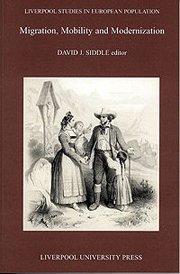1 results in Liverpool Studies in European Population

Migration, Mobility and Modernization
-
- Published by:
- Liverpool University Press
- Published online:
- 05 November 2011
- Print publication:
- 01 January 2000
-
- Book
- Export citation

